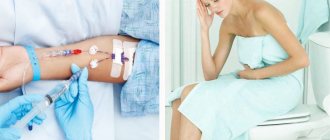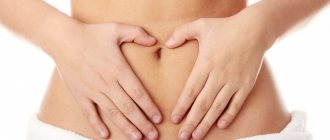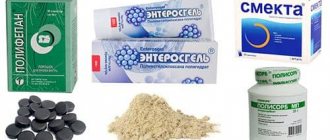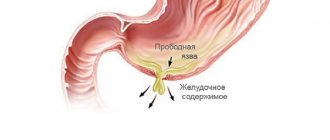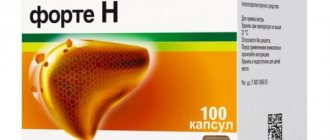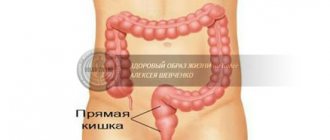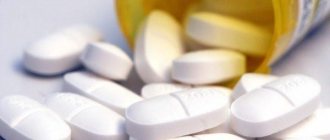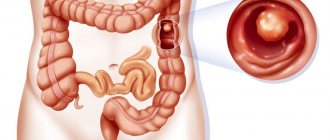In cancer, aggressive drugs that negatively affect the entire body are used to destroy the tumor and metastases. Therefore, recovery after chemotherapy plays an important role in the fight against cancer and the prevention of relapses. Rehabilitation therapy is often carried out at home. The scheme includes the use of medicine prescribed by a doctor, vitamins, adherence to a diet, and cleansing the body with folk remedies is also encouraged.
Recovery duration
To completely get rid of cancer and destroy metastases, it is important to treat oncology comprehensively, using methods aimed at the complete destruction of pathological cells. Chemotherapy is always included in a comprehensive treatment regimen. The procedure is carried out before and after surgical treatment; its essence is the introduction into the body by injection or oral route of toxic drugs aimed at destroying the cancer tumor and the metastases that have separated from it. These drugs are carried through the bloodstream throughout the body, simultaneously poisoning vital internal organs. Therefore, after chemotherapy, rehabilitation is necessary to fully restore the body and increase immune strength.
The duration of rehabilitation depends primarily on how good the patient’s health is initially and how quickly the body responds to supportive manipulations. A young person with timely diagnosed cancer will recover on average 3-6 months. During this period, you need to take medications prescribed by the doctor, eat right, and lead a healthy lifestyle.
Adjuvant chemotherapy for gastric cancer
This type of antitumor treatment is sometimes necessary after radical surgery has been performed on the affected digestive organ. But it is worth noting that such chemotherapy after removal of the stomach is permissible only if the patient does not have clinical, histological and radiological signs of residual pathological phenomenon. Its main goal is to eliminate microscopic metastases.
Adjuvant chemotherapy is preventive in nature, as it can act on individual abnormal cells remaining after surgery that circulate through the bloodstream. This method is not a standard antitumor treatment and is used mainly as preventive chemotherapy after surgery. The main reason that this type of therapeutic measures is not used in all cases is the lack of specialized tools for the effective treatment of gastric tumors.
After surgery, intraperitoneal chemotherapy is also used. This method of therapy is used only when a cancer patient develops signs indicating the spread of mutated cells from the main digestive organ to the inner abdominal surface. This leads to the development of ascites (accumulation of fluid in the abdomen). During a chemotherapy course, specialists remove it using a catheter. Through it, chemotherapy drugs dissolved and heated to 40 °C are poured into the peritoneum. Additionally, with intraperitoneal chemistry to remove drugs from the body, cancer patients are prescribed IV fluids and antiemetics.
Read here: Oncology of the genital organs in girls
What do we have to do?
Certain groups of medications designed for specific tasks will help you recover from chemotherapy, support your immune system, and improve the functioning of your internal organs. The treatment regimen is selected individually, taking into account the type of cancer, the stage of the disease, and the nature of the manifestation. To restore veins and strengthen small blood vessels, the following is prescribed:
After chemotherapy, some patients experience rapid blood clotting and anemia. The following tools will help you cope with this problem:
It is important to restore the liver after chemotherapy, because this organ is one of the first to suffer during such a procedure. It is important to try to remove toxins from the gland cells, and then use a medicine that has a regenerating effect. Effective hepatoprotectors during chemotherapy:
Recovery after chemotherapy necessarily includes a therapeutic diet, which is based on the principles of proper nutrition. The patient's diet must be balanced and complete. It is important not to overload the stomach; for this it is useful to eat small meals, 4-6 times a day. It is recommended to prepare dishes using a gentle method, in order to restore the liver, it is worth limiting the consumption of fats and salt.
The following foods must be present in the diet of a cancer patient:
- fresh fruits, vegetables, stewed, steamed, grilled or simply boiled;
- boiled eggs and in the form of a steam omelet;
- lean white meat, lean fish;
- porridge cooked in water;
- fermented milk drinks, cottage cheese;
- dried fruits, a little honey;
- herbal tea, freshly squeezed fruit and vegetable juices, compotes, fruit drinks, still mineral water.
Return to contents
Unconventional treatment after chemotherapy also helps to effectively fight cancer and prevent relapses. In order for folk remedies to work and bring results, they are used for a long time and regularly. If after chemotherapy a person has stomach and intestinal pain, it is recommended to use the following infusion:
- Mix 1 tsp. herbs yarrow and St. John's wort, pour all 250 ml of boiling water.
- Leave the product for 15 minutes, drink in the morning and evening before meals.
A medicinal collection made from herbal ingredients such as:
The procedure for preparing the infusion is as follows:
- Combine the components in equal proportions.
- Separate 1 tbsp from the mixture. l. and pour boiling water over everything - 200 ml.
- Take 2 spoons of infusion each time before meals.
A side effect of chemotherapy is skin burns. To speed up wound healing, it is recommended to smear it with a wound-healing medicine prepared at home according to this recipe:
- Peel and chop a large aloe leaf.
- Add 1 tbsp to the pulp. l. honey, mix.
- Apply the natural remedy to the wound overnight.
Liver protection is one of the important tasks during chemotherapy. A good folk remedy for these purposes is a decoction of oats in milk.
To maintain the body's defenses, it is necessary to take vitamins during chemotherapy. After therapy, the use of vitamin preparations does not stop. In addition, it is useful to engage in light sports, do exercises daily, visit sanatoriums and resorts, enroll in a course of physiotherapeutic procedures, live a full life, rejoice and not pay attention to troubles. The patient’s loved ones should also actively participate in recovery. In addition to monitoring the use of medications, vitamins, diet and other auxiliary methods, psycho-emotional support and the creation of all conditions for a speedy return to a full life are important.
Your doctor will tell you how to recover after chemotherapy
Contraindications
Taking sodium bicarbonate in compliance with the correct dosage, the medicine has a positive effect on the body, but if you ignore the doctor’s recommendations, baking soda turns into a destructive agent. Treatment with sodium bicarbonate should not be carried out for a long time and in large volumes. White crystalline powder treats discomfort in the esophagus and is used for other diseases, but sodium bicarbonate should be avoided in the following cases:
- with hypersensitivity to the components of the substance; when the stomach hurts and there is an intestinal disorder; women during pregnancy; for pain in the heart and the presence of cardiovascular diseases; patients diagnosed with diabetes mellitus.
By neglecting proper treatment with a solution of water and sodium bicarbonate, the patient may experience pain in the stomach, loss of appetite, vomiting, indigestion, nausea and headaches. Observing these symptoms, the patient should stop treatment with the powder; if this is not done, convulsions may occur. It is forbidden to take sodium bicarbonate on an empty stomach, for people who have a low level of acidity of gastric juice and have calcium intolerance.
Doctors do not recommend using soda as a treatment for gastric diseases in parallel with high doses of alkaline mineral waters, which can neutralize acid. If taking a soda solution on an empty stomach cannot be avoided, then you should consult your doctor and get the necessary information about caution, dosage and side effects. In most cases, a soda drink is prescribed to patients as an auxiliary remedy that can speed up the healing process.
What are the effects of chemical therapy?
Chemotherapy always has undesirable effects; in cancer patients they manifest themselves differently: in some they are mild, in others they are more severe.
- indigestion;
- nausea and vomiting;
- weakness and fatigue;
- loss of appetite;
- anemia;
- the appearance of hemorrhoids.
Unpleasant but characteristic side effects are cosmetic defects: hair loss, dryness and flaking of the skin, brittle nails with the appearance of longitudinal stripes on them.
How long does it take to recover after chemotherapy?
Rehabilitation at the cellular level begins immediately after the end of the chemotherapy course, which leads to a weakening and reduction of side effects. But how quickly the unpleasant symptoms go away depends on the course of the disease.
According to the patient's rehabilitation plan:
- the composition of blood and bone marrow improves;
- damaged liver cells and intestinal microflora are reanimated;
- immunity and metabolism are restored.
In addition, cosmetic skin and hair care is necessary. You will also need the help of a psychotherapist.
Modern anti-tumor medications prescribed for cancer have a more gentle effect, which makes them easier to tolerate. After a few months, if there is no relapse, patients can return to their normal lifestyle. But sometimes the body is so weakened that full recovery can take up to two years.
Neoadjuvant chemotherapy for gastric cancer
This method of treatment, unlike adjuvant treatment, is carried out immediately before the start of the main course of therapy. Its main goal is to reduce the size of the primary tumor to facilitate surgery and, therefore, improve its results.
Standard neoadjuvant chemotherapy for gastric cancer consists of using the most optimal AC regimen:
- Adriamycin, a frequently used analogue of which is Doxorubicin. The medicine is prescribed intravenously at a dose of 45 mg/sq.m per day.
- Cyclophosphamide. Chemotherapy before surgery to remove stomach cancer with this drug is also carried out using intravenous injections. Its generally accepted dose is 500 mg/sq.m per day.
Preoperative chemotherapy according to the AC regimen involves repeating it six times with an interval of 3 weeks. Many patients are interested in the question of how body area is calculated. This is usually done by doctors when prescribing the drug, but for general information it should be said that the Mosteller formula is used for this. Its meaning is that it is necessary to derive the square root of body weight, in kilograms, multiplied by height in centimeters and divided by 3600.
What medications speed up rehabilitation?
During the recovery period, the doctor may prescribe a course of medications to relieve unpleasant symptoms. This may include:
- anti-vomiting pharmaceuticals;
- hepatoprotectors for the restoration of liver cells;
- medicines against stomatitis;
- enterosorbents for intestinal cleansing;
- medications that help increase white blood cell levels;
- anti-anemia remedies.
After therapy, the patient has an urgent need for vitamins, which accelerate the recovery process and normalize body functions. To increase the regenerative capabilities of cellular structures and cope with thrombocytopenia, complexes containing ascorbic and folic acid, carotene and vitamin B9 will be required.
Heartburn medicine
An unpleasant burning sensation behind the sternum can occur due to a variety of factors. This feeling deprives a person of peace. Physical discomfort is disconcerting, making it difficult to carry out daily activities. When such phenomena become more frequent, a feeling of anxiety is added, because each of us knows that pain does not occur without a reason. If you have reason to suspect a serious illness, go to the doctor as soon as possible. To make your life easier in the coming hours, use heartburn medicine. Traditional and traditional medicine will help you cope with this in a matter of minutes.
How to resuscitate the liver
Liver cells - hepatocytes - are subject to the most severe damage, since this organ is directly responsible for neutralizing toxic substances and medicinal components.
In addition to the course of hepatoprotectors, it is recommended to use oats. Flavonoids and polyphenolic compounds included in its composition help improve lipid metabolism and normalize intestinal and liver functions.
In order for hepatocytes to regenerate faster, it is better to prepare milk-oat jelly at home. A tablespoon of oat grains is poured into a glass of milk and boiled for 15 minutes, after which it is infused for the same amount. Drink in small portions throughout the day.
Causes, symptoms and treatment of flatulence in adults
General concept of flatulence
Gases are found in the intestines in the form of foam, consisting of small bubbles surrounded by viscous mucus. This foam interferes with the digestion process and makes it difficult for digested food to move through the intestines. Under normal conditions, the human intestine contains from 200 ml to 1 liter of gases. Up to 500 ml is released per day. Exceeding the normal volume is observed during flatulence, when up to 3 liters of gases can accumulate in the intestinal loops. At the same time, the volume of gas released may also increase.
A condition of the body in which an increased volume of gases accumulates in the digestive system is intestinal flatulence. The reason for the accumulation of gaseous substances may be their excessive formation or insufficient removal from the body. Flatulence (bloating) in itself is not a disease; it is a symptom of either a pathological process in the body or a functional (reversible) condition.
Causes of flatulence
There are several reasons for the increased formation of gases in the digestive tract. The essence of flatulence is the malfunction of the enzyme system due to permanent or temporary disruption of its functioning. A small amount of enzymes and their improper distribution lead to a lot of insufficiently digested food entering the intestines. Because of this, fermentation and putrefactive processes are sharply activated, and the amount of gases increases greatly.
There are several forms of flatulence, which differ in the reasons for its occurrence:
- Alimentary (food) flatulence. Occurs when consuming foods that are digested with the formation of large amounts of gases. For example, legumes, raw vegetables, sweet fruits, brown bread, carbonated drinks. Increased gas formation can also occur when you change your diet, when food that is unusual for the body begins to enter the digestive tract, as well as when you overeat, when a large amount of food remains in the intestines for a long time, causing fermentation and rotting processes. The cause of bloating can be swallowing air due to poor chewing of food, snacking on the run, or talking while eating.
- High-altitude flatulence - occurs when climbing to a significant height (in mountainous areas) due to changes in atmospheric pressure. At the same time, the pressure of gases inside the intestines also changes.
- Flatulence in women during pregnancy and before the onset of menstruation. Increased gas formation occurs under the influence of hormonal surges, as well as fetal pressure on the intestinal walls.
- Dysbiotic flatulence. Occurs when the quantitative balance of normal intestinal microflora is disturbed. This form develops after treatment with antibiotics, chemotherapy, and also when insufficient gastric juice is produced.
- Dynamic flatulence. Develops when normal intestinal motility is disrupted. This may be caused by spasm of the smooth muscles of the intestine or its atony (weakness). Such conditions occur after operations, poisoning and serious illnesses, as well as in older people.
- Mechanical flatulence. It is characterized by the presence of a mechanical obstacle to the movement of digested food along the intestine. Occurs with tumors, stenoses and adhesions in the intestinal cavity.
- Circulatory flatulence. Occurs when blood circulation in the gastrointestinal tract is impaired due to pathology of the blood vessels.
- Digestive (associated with digestion) flatulence. Due to insufficient production of enzymes by the pancreas, food in the small intestine is not absorbed sufficiently, passing into the large intestine poorly digested and creating conditions for fermentation and rotting. For example, with lactose intolerance.
- Psychogenic flatulence. It is observed during stress, psycho-emotional overload - spasms of the smooth muscles of the intestine occur, leading to bloating.
Symptoms of flatulence
Manifestations of flatulence are obvious:
- swollen, hard, enlarged abdomen;
- a feeling of fullness and heaviness in any part of the abdomen, especially after eating;
- moderate, “dull” abdominal pain;
- sharp pain of a cramping nature;
- Rumbling in the stomach of varying volumes.
The process of passing gases during flatulence occurs:
- rare and difficult - this is accompanied by severe pain and heaviness in the abdomen;
- active and frequent, with an unpleasant odor - this causes discomfort and embarrassment.
Depending on the underlying cause and severity of symptoms, accompanying symptoms may develop during flatulence:
- constipation or diarrhea;
- belching, nausea, hiccups;
- burning and pain in the heart area;
- dyspnea;
- heart rhythm disturbances;
- sleep disorders;
- general malaise;
- decreased mood up to neurotic disorder.
In men, subcutaneous fat is located inside the abdomen, so the intestines are located closer to the outer abdominal wall than in women. Therefore, their manifestations of flatulence may be more “turbulent,” sometimes causing more discomfort.
What to do if you have constant flatulence?
It often happens that the state of bloating is caused by significant errors in the diet, for example, after holidays with heavy feasts. In this case, after returning to a normal lifestyle and your usual diet, digestion also returns to normal.
If, after adjusting your diet, symptoms continue for a long time, you should consult a doctor for examination. As a rule, laboratory, bacteriological, and instrumental research methods are prescribed.
Treatment of flatulence
The approach to treatment should be comprehensive; questions about treatment methods should be discussed with a doctor. Basic principles of restoring normal intestinal activity during flatulence:
- a thorough examination to identify or exclude the underlying disease;
- changing the dietary regimen based on individual characteristics identified during examinations;
- correction of the composition of the intestinal flora;
- stimulation of intestinal motility for hypotension and atony;
- removing gases present in the intestines, taking measures to prevent the appearance of excess gases.
If a disease is diagnosed that causes increased flatulence, its main treatment is carried out along with symptomatic treatment that alleviates the condition caused by bloating. Persons over 50 years of age must be screened for intestinal cancer. Dietary recommendations:
- exclusion of foods that cause gas formation: legumes, all types of cabbage, fresh white and black bread, raw sweet fruits, carbonated drinks; for lactose intolerance – all dairy products;
- limiting starchy foods: potatoes, baked goods, sweets;
- cooking by boiling and steaming (exclude fried foods);
- food should be low-fat;
- if there are no problems with lactose tolerance, consume fermented milk products.
To adjust the balance of intestinal flora, as well as to regulate the formation of gases and remove already formed gases, over-the-counter drugs are prescribed for use at home:
- prebiotics (for example, Laktofiltrum) – stimulate the growth and reproduction of the intestinal bacteria’s own;
- probiotics (for example, Linex) – colonies of bacteria beneficial to the intestines in ready-made form;
- defoamers (for example, Espumisan) - destroy gas bubbles and reduce the synthesis of new gases;
- enterosorbents (for example, activated carbon, Smecta) - help eliminate toxins and pathogens, as well as the gases themselves;
- drugs that affect the motor activity (motility) of the digestive tract (for example, Motilium, Metoclopramide) - improving peristalsis, quickly removes gases;
- herbal remedies (for example, Plantex) - stimulate peristalsis and accelerate the elimination of gases.
Increased flatulence is painful due to its pain and pressure of gases on the intestinal walls. A gas outlet tube often helps remove accumulated gases. Cleansing enemas are used for the same purpose, but their frequent use is undesirable. Physical activity helps to strengthen all processes in the body, including intestinal motility. Simple exercises with bending your knees can speed up the process of passing gas.
Prevention
To prevent flatulence, you should adjust your diet. As mentioned above, you should eliminate or minimize the consumption of foods that contribute to gas formation. You need to eat food fractionally, in small quantities. You should not take long breaks between meals to avoid overeating.
You should move more, choosing a set of exercises according to your age. If you are periodically bothered by severe diarrhea or frequent constipation, you should be examined by a doctor. This way you can quickly find out the causes of the disease and prevent possible complications in the form of flatulence.
How to raise immune status
To increase immune protection, antioxidants and vitamins are prescribed. You may also need measures to help restore immune strength and accelerate the elimination of toxins:
- special treatment in a sanatorium;
- physiotherapeutic procedures;
- lymphatic drainage;
- Exercise therapy.
Therapeutic gymnastics allows you to get rid of swelling and pain, stimulates the body to eliminate cancer cells as quickly as possible. Lymphatic drainage procedures help stop inflammatory processes and strengthen immune defense, as well as stimulate cellular metabolism.
What will help improve the condition of blood vessels
After a chemotherapy course, the veins become almost invisible, which leads to problems when taking tests. It is also difficult to install an IV with saline solution, which flushes chemicals out of the body. Hematomas appear at the injection sites, they itch and itch.
After chemotherapy, phlebitis, an inflammation of the vascular walls, becomes a common occurrence.
To eliminate such problems, use alcohol lotions, compresses made from cabbage leaves or plantain. Sometimes it is acceptable to use ointments if there is no allergy.
What to do to make your hair grow faster
Baldness is a common side effect of treatment, but not everyone experiences it the same way. Some patients experience partial alopecia, while others experience complete loss of hair on both the head and body. If hair remains here and there, it will be dry, brittle, and lifeless.
To speed up the growth of new ones, you need to:
- Do not dry with a hot hairdryer, but let it dry naturally;
- When washing your hair, use formulations for dry hair, regardless of what product you used before;
- do not curl or straighten;
- comb exclusively with a soft brush;
- avoid exposure to direct sunlight;
- include in the menu dishes rich in beneficial microelements.
To strengthen and accelerate growth, you can apply nourishing masks, for example, based on eggs, honey, rye bread or kefir. But not store-bought ones, but homemade ones, made exclusively from natural products.
How quickly your hair grows depends largely on proper care.
The time it takes for hair growth to recover depends on the individual characteristics of the person. But the lost hairs will definitely grow back. Interestingly, they become thick, thick and strong. The tone may change slightly, becoming brighter and more saturated.
Basic set of products
The composition of products that are allowed to be consumed after the end of treatment greatly depends on the patient’s condition and is selected by the doctor individually. The expanded range of food products includes the following:
- Whole grain porridge: oatmeal (but not flakes), barley, pearl barley, buckwheat. All these cereals form the basis of dietary nutrition.
- Dairy products. It should be emphasized that whole milk and butter must be excluded, as they take too long to digest. Various yoghurts, curds, and puddings with chemical fillers also fall into the category of prohibited products. Everything should be natural and very fresh.
- Boiled eggs: chicken or quail.
- Dietary meat: chicken, quail, rabbit, nutria, veal.
- Some fruits, vegetables, herbs.
How to recover after chemotherapy using folk remedies
Traditional medicine has a fairly large arsenal of restorative recipes. The most popular decoctions include:
- St. John's wort and yarrow - help cleanse the intestines. Mix a large spoonful of a mixture of medicinal herbs in a glass of boiling water, infuse and drink twice a day;
- flaxseed – helps eliminate toxic substances. Infuse 15 g of flaxseeds in 250 ml of boiling water for a quarter of an hour. Next, filter and consume a tablespoon five times a day, regardless of meals;
- Rhodiola rosea – to restore immunity. A large spoonful of plant material is poured with 0.5 liters of boiling water. Let it brew for six to eight hours. The tincture is filtered and drunk three times a day a quarter of an hour before meals;
- aloe – as an anti-inflammatory agent. You will need 80 ml of juice squeezed from the leaves plus 10 ml of vodka. The components are mixed, the product is taken in a small spoon three times a day for a week.
To improve the functioning of the digestive system, you are allowed to consume freshly squeezed plantain juice. If your blood clots poorly, a nettle infusion or lungwort tea will help. The latter not only normalizes coagulation, but also prevents the further formation of mutated cells. To remove toxic substances from the body, you need to drink rosehip teas.
If you know how, you can recover from chemotherapy quite quickly. It is important to choose the right rehabilitation course and start activities from the first days of treatment.
Also interesting to read: lung cancer in women
Chemotherapy is widely used in the treatment of cancer and dangerous tumors. The procedure reveals specific aspects, causing a negative effect on the organs and body. Therapy can improve the patient’s condition, but under the influence of chemicals the immune system is weakened, the functioning of many organs is disrupted, and many unpleasant side effects are observed. At the end of therapy, the patient must undergo recovery in a clinical setting or at home.
Features of chemotherapy
Chemotherapy carries a serious toxic load on internal organs and other body systems (including intestinal microflora). It is for this reason that the patient needs a high-quality recovery process and thoughtful rehabilitation. Prevention of pathological disease must be carried out strictly according to the approved scheme with a qualified specialist. Such strict precautions are due to the fact that a high level of intoxication affects the development of bacteria, viruses and fungi. Candidiasis quite often occurs as a consequence of long-term use of medications. In 90% of cases after chemotherapy there is a risk of developing thrush.
Under optimal conditions, staphylococcus can increase in number without hindrance and dynamically move through small arteries. Thus, inflammatory areas will develop with further transformation into thrombosis, sepsis and dangerous bleeding. There are cases where death can occur.
Chemotherapy and side effects
Chemotherapy is necessary to treat cancer. To carry out the procedure, special medications are used to inhibit the spread of tumor cells. Medicines negatively affect and destroy malignant tissue. However, along with the destruction of cancerous growths, healthy cells also die.
The consequences of chemotherapy are always present, and patients tolerate side effects differently. For some, the recovery period passes quickly, while others encounter difficulties and difficulties. In addition to the internal problems caused by chemotherapy, chemicals affect the appearance. Common side effects include the following symptoms:
- Hair loss.
- Disorders of the digestive system, gastrointestinal tract, constipation, diarrhea, diarrhea.
- Blood in stool.
- Nausea and vomiting.
- General weakness in the body, poor health.
- Decreased or complete absence of appetite.
- Dryness and peeling of the epidermis.
- Fragility of the nail plate, the appearance of vertical stripes on the surface.
- Severe anemia.
- Stomatitis, oral mucositis - pain occurs in the throat and oral cavity.
- Bleeding, differing in the nature of its occurrence and location.
- Allergic reactions.
- The appearance of swelling of the limbs.
- Impaired coordination, concentration, memory and logical thinking.
- Blurred consciousness.
- Numbness in the arms and legs, burning and tingling in different parts of the body.
- Pain in the legs while walking.
- Dizziness, imbalance.
- Cramps, pain and fatigue in the muscular system.
- Hearing impairment.
- Decreased sexual activity, reproductive dysfunction.
- Disruption of the urination process.
- Urine changes its color, smell and structure.
Preparation for the procedure
To administer highly toxic drugs, it is necessary to carefully prepare the body - this will reduce the occurrence of side effects and increase the positive results of the course.
A month before the procedure, the patient is recommended a special diet. The regimen is required to reduce side effects from the gastrointestinal tract. Also, properly selected nutrition will remove excess stress from the digestive system. The diet is composed of a large amount of protein with vitamins and microelements. You need to eat often and in small portions. It is allowed to take up to 150 g of food once.
It is recommended to completely exclude fatty foods, spicy seasonings, salted and pickled foods, as well as smoked foods. It is worth eating warm food - cold and hot irritates the gastric mucosa, which negatively affects the patient’s well-being.
Chemotherapy requires preliminary administration of infusion drugs and hepatoprotectors that effectively influence metabolic processes within the body.
Liver restoration
After chemotherapy, the first stage is to restore liver functionality. Normal metabolism occurs based on the performance of organs and materials. The liver and kidneys, skin and intestines cleanse the body of elements of the breakdown of toxic substances. The liver is considered the key site where micronutrients are processed and excreted from the body. Drugs used during chemotherapy are passed through the gland, placing a heavy load on the organ.
To restore the organ, it is recommended to take a number of medications. Legalon, Essentiale, Hepatamine, Ovesol and Rezalut Pro show high efficiency in the rehabilitation of the body.
- Legalon - the product consists of spotted milk thistle extract. The drug has hepatoprotective properties and stimulates cell metabolism, as well as the functions of the digestive tract. The medicine normalizes the hepatocyte membrane. The actions of hepatoprotectors are aimed at combating liver pathologies and providing rapid therapeutic effects. The component binds free radicals and is able to relieve inflammation in the organ. Dosage is determined by the attending physician.
- Essentiale is a product in combination with phospholipids. The elements favor improved characteristics of the cell membrane, pantothenic acid, nicotinamide and group B elements. The drug is effective in the development of chronic and acute hepatitis, liver necrosis, cirrhosis and liver intoxication. The drug is taken 2 tablets 3 times a day.
- Hepatamine is a medicinal substance prescribed for the liver in case of acute and chronic damage. The drug is highly effective in restoring liver function. Drink 2 Hepatamine tablets 15 minutes before meals 3 times a day.
- Ovesol is a complex preparation based on extracts of seed oats, peppermint leaves (helps get rid of nausea), immortelle flowers, young grass and turmeric roots. The drug is characterized by detoxifying properties, disperses stagnation of bile fluids and normalizes the draining functionality of the biliary tract. Take the substance 20 drops 2 times a day before meals.
- Rezalut Pro - the medication contains soybeans and essential phospholipids. The drug is aimed at curing chronic liver pathologies. The drug also normalizes the functionality of the cellular structure of the organ. The substance is taken 2 capsules 3 times a day before meals.
Liver recovery takes a long time. During the entire rehabilitation period, it is important to maintain a healthy diet and take medications that support the functionality of the organ. Hepatotropic therapy will help speed up and facilitate the recovery process.
How to get rid of heartburn at home
Each person’s body is individual, so you have to choose from a variety of medications those that will effectively eliminate discomfort. Do not lose sight of the nature of the unpleasant sensations. Before you decide to take any measures, analyze your diet over the past 24 hours to identify the “culprit” for the burning sensation in the esophagus. This will help you quickly choose an effective remedy to get rid of discomfort. To have a general idea of ways to relieve heartburn, let's look at remedies that have proven effective.
Folk remedies
Grandmother's medicines, proven over the years, will help you quickly get rid of an unpleasant burning sensation in the esophagus. They are easy to prepare and harmless to internal organs. Write down a few recipes for yourself that can easily cope with heartburn:
Wormwood. To prepare this remedy, you need to pour a third of a dessert spoon of wormwood with two glasses of cool boiled water, and then leave for 40-48 hours. When heartburn occurs, the remedy is taken orally in small sips. Swamp calamus. The root of this plant is turned into powder. There is no need to brew it. To get rid of heartburn, you need to place a small amount of powder on your tongue using a teaspoon and wash it down with a medium amount of warm water. Repeat this procedure three times, and heartburn will subside for a long time. Angelica infusion. To prepare a medicine for heartburn, the seeds, roots and even dried leaves of this plant are suitable. Grind the angelica thoroughly and take a teaspoon of powder. Brew boiling water in a glass, cover with a lid. Time a quarter of an hour. Drink the resulting tincture every 6 hours, 20-25 ml, and you will forever forget about problems with heartburn. Mint tea. The leaves of this plant can be used as an effective medicine against heartburn. Make tea from them and drink 500-700 ml daily.
If a burning sensation suddenly appears in the esophagus, but you don’t know what to drink for heartburn at home, use modern pharmaceuticals. Drug treatment demonstrates high effectiveness, so in case of emergency, if there are no proven traditional medicines at hand, you can use traditional remedies.
The medications listed below will help relieve heaviness, remove bloating and normalize the level of acidity in the stomach:
1) "Gastrozol". Expensive, but an effective drug that eliminates discomfort in the stomach and esophagus. There may be analogues with a similar name on sale. The active substances of the drug have a protective effect on the parietal cells of the surface of the gastric mucosa, protecting them from aggressive factors.
2) "Panum". The active ingredient of this drug is rabeprazole. Thanks to it, the medicine Panum suppresses the secretion of gastric juice. Over time, the burning pain in the chest fades away.
3) “Hydrotalcite”. Chewable tablets prescribed for adults and children over 6 years of age. The drug intensively affects the mucous membranes inside the stomach, reducing the destructive effects of aggressive factors.
4) "Relzer". An effective antacid drug that has a complex effect on the gastrointestinal tract. It quickly relieves heartburn, relieves nausea, and relieves flatulence. The use of Relzer during pregnancy and lactation is not recommended.
5) "Gastal". A medicine that reduces high acidity and eliminates serious dyseptic disorders. This drug will help you endure acute stomach pain caused by increased levels of hydrochloric acid with minimal discomfort. Gastal will reliably protect you from destruction of the mucous membranes. The active ingredients have a high intensity of action, so they must be used with extreme caution, listening to the doctor’s recommendations.
Inexpensive medicine
When a person suffers from heartburn, he unconditionally listens to the doctor’s opinion and dutifully purchases the prescribed medications at the pharmacy. Being unwell makes us gullible and, relying on the authority of the doctor, we spend as much as necessary on medicine. At the same time, only a few people think about the fact that there are almost always cheaper analogues, the effectiveness of which is in no way inferior. If the economic issue of the treatment process is important to you, write down the names of inexpensive medications that will help block the burning sensation in the esophagus:
1) "Omeprazole". Analogue of the drugs "Gastrozol" and "Omez". The composition and dosage are completely the same, but the cost of Omeprazole is 52-74% lower.
2) “Pariet”. An analogue of the drug "Panum". The economic benefit when purchasing a package of Pariet tablets is 47-54%. For heartburn, the medicine pariet is prescribed to adults and children.
3) "Gestin". A medicine similar to Relzer. In pharmacies its cost is 24-28% lower.
Kidney recovery
Many patients face serious problems during kidney recovery. The whole process takes place with constant vomiting, diarrhea, bloody stools are observed, and the patient feels sick during rehabilitation. This is fraught with the release from the organs of the necessary microorganisms involved in the normalization of the functioning of the kidneys and adrenal glands. Over time, kidney failure develops.
As a result, the load is placed on the duodenum. The organ performs all the functions of the kidney. During diarrhea, sodium chloride, which is involved in the production of hormones, is excreted. This situation indicates complications of chemical pathology. To normalize the kidneys, drug treatment is carried out. Kidney pathology is treated with the help of effective drugs - Trinephron, Nephrin, Canephron, Nephrofit.
- Trinephron - prescribed for the development of chronic cystitis, urolithiasis, nephroptosis, urinary tract disorders, as well as to normalize renal function. Drink 1 piece of medicine 2 times a day.
- Nephrin - aimed at stabilizing the kidneys after a chemical procedure. The medicinal substance enhances the effect of drug therapy. The component is drunk 1 tsp. 1 time a day before meals.
- Canephron is known for its powerful anti-inflammatory and antispasmodic properties. In particular, the drug is common in urology. The medication is part of the main treatment method or is used in combination with other medications for patients with acute and chronic kidney diseases caused by infections. Take 1 tablet of Canephron 2 times a day.
- Nephrophyte is a medicinal collection consisting of plant components. The drug is known as a strong diuretic. The component is recommended for the treatment of people with developed foci of inflammation in the urinary tract and kidneys. The medication is included in monotherapy depending on the degree of complications and the nature of the disease. The substance is used in the form of a tincture. 2 tablespoons of the component are poured into 500 ml of boiling water and infused.
During chemotherapy, many systems in the body are disrupted. There remains the possibility of permanent kidney failure. Therefore, it is important to monitor the performance of organs. As therapy for rapid recovery, tubular reabsorption, glomerular filtration and preventive measures for viral pathologies in the kidneys and the formation of urate stones are prescribed. Rehabilitation requires seriousness and responsibility, since organ restoration is an important measure.
Treatment of belching after eating
This variant of aerophagia also occurs after eating. An integrated approach will help you get rid of this unpleasant symptom.
At the initial stage, experts advise reviewing the food system, adhering to the above rules. To eliminate belching, it would be a good idea to give up the habit of drinking drinks with your meals. Gastroenterologists insist that thirst should be quenched 60–90 minutes before a meal and 60–120 minutes after it. Penetrating into the stomach along with food, water dilutes gastric juice, reducing the quality of breakdown of nutrients.
You should eat slowly and in small portions. It makes sense to avoid eating certain foods that create favorable conditions for the accumulation of air in the intestines (cabbage, potatoes, corn, etc.).
Constipation is another factor that aggravates the problem of gas formation in the gastrointestinal tract. Delayed bowel movements are a common cause of bloating. In this case, the doctor prescribes diet therapy, which focuses on foods rich in fiber.
Only by changing your diet and lifestyle will drug therapy be most effective.
To combat this unpleasant symptom, experts use:
Antacids - “Vikalin”, “Rennie”, “Vicair” (normalize pressure in the abdominal cavity, protect the gastric mucosa from corrosion, catalyze the process of breaking down food). Analogs: “Gastrofarm” (price: 100 rubles), “Ulkavis” (price: 170 rubles); Proton pump inhibitors - Bioprazole, Lancet, Ulthera (reduce the production of gastric juice). Analogues: “Omizak” (price: 90 rubles), “Omeprazole” (price: 40 rubles);
Preparations enriched with enzymes - “Mezim”, “Festal”, “Gastal” (help improve digestion). Analogs: “Panzicam” (price: 80-100 rubles), “Pancreatin” (price: 60 – 90 rubles); Drugs that restore the acidity of gastric juice - “De-Nol”, “Novobismol”, “Ventrisol”, analogues: “Omez-D” (price: 150 rubles), “Nolpaza” (price: 200 - 250 rubles); Antibacterial agents - “Amoxiclav”, “Metronidazole” (eliminate helminths and other pathogenic organisms in the stomach), analogues: “Oxamp” (price: 80 rubles), “Ecoclave” (180 rubles).
Important! A course of drug therapy should be started under the supervision of a doctor, who first determines the level of acidity in the stomach. Of particular importance in the treatment of belching are preparations containing enzymes, since they contain the necessary substances to improve the functioning of the digestive system.
Blood restoration
After chemotherapy, it is necessary to normalize the coefficients of the leukocyte formula, biochemistry, general analysis and ESR. The information will help determine the effectiveness of the treatment method. The doctor also checks the general condition and how the person feels. Chemotherapy often damages blood cells. However, it is possible to detect a violation after a while. If cancer patients manage to survive the first stage, the second begins, showing hidden effects.
At the second stage, patients develop swelling of the extremities, tissue necrosis, infiltration, and destruction of epithelial tissues of the gastrointestinal tract. Such destructive processes provoke a destructive effect on the erythrocyte sprouts of the bone marrow. To restore the blood composition, a mass of platelets and red blood cells is transfused. In some situations, bone marrow is transplanted.
The methods are difficult to implement, since the ingress of infections and viral bacteria can lead to problems that will remain with a person for the rest of his life. Hemostimulating therapy allows you to cleanse the blood. A number of medications have been developed that can favorably normalize the blood structure. Restorative therapy includes Sorbifer Durules, Ferrum Lek, Totema, Filgrastim, Neupogen and Leukogen.
- Sorbifer Durules is an antianemic agent. Iron is considered a building block of the body. The element is involved in the production of hemoglobin and in the oxidation of living cells. The drug helps release iron ions. Drink 1 element 2 times a day. For iron deficiency anemia, the dosage is increased by 2 capsules. The course of use of the substance is 4 months, until the hemoglobin volume reaches the norm.
- Ferrum Lek is part of the group of antianemic substances. The medicine consists of iron in the form of the compound polymaltose hydroxide. Take the medication 1 spoon of the drug per day, depending on the prescribed therapy. Tablets in chewable form can be swallowed completely or chewed. The dose of the medication depends on the degree of iron deficiency. The medicinal component is taken in syrup and tablet form.
- Totema - consists of copper, manganese and iron. Indication for use: iron deficiency anemia, regardless of the nature of its occurrence. The component is prescribed for the prevention of anemia in patients at risk, especially with breast cancer: pregnant women, patients of reproductive age, children under 18 years of age, the elderly. Before taking the medicine, dissolve it in liquid. The dosage and duration of therapy is calculated by the doctor. Take 2 tablets. The course of taking Totema is 6 months.
- Filgrastim can effectively reduce the duration and frequency of febrile neutropenia in humans during chemotherapy. The dosage calculation is individual and based on the patient’s well-being. The component is drunk at a rate of 5 mcg per 1 kg of body weight once a day. The injection dose is 5-12 mcg per 1 kg of patient weight. The course of therapy is 14 days.
Chemotherapy regimens for stomach cancer
Chemistry courses, thanks to which oncology of the main digestive organ is cured, are perceived by people far from medicine as encryption. Few patients can understand what the ABVD or MEP regimens mean when treating stomach cancer. Specialists, answering cancer patients’ questions about these strange names, usually explain that they are an abbreviation for cytostatics that must be administered to the patient according to a certain scheme. The order in which they are introduced is the arrangement of letters in the encoding.
Quite often diagnosed, Hodgkin's disease, gastric lymphoma, which differs from cancer in its slower growth and rare development of metastases, is treated according to the ABVD regimen, which includes such potent drugs as Vincristine, Procarbazine, Embiquine, Prednisolone. In case of an unfavorable prognosis of the disease, the patient may see the BEACOPP coding in the prescriptions. It is carried out in two courses, using Cyclophosphamide, Doxorubicin and Etoposide in the order in which they are written.
Read here: Symptoms and manifestations of lung cancer at different stages
General chemotherapy regimens for stomach cancer can be seen in the table, but we should not forget that the information in it is presented for general viewing, and the direct prescription of drugs is the exclusive prerogative of the doctor. All drug administrations are performed intravenously.
| COURSE OF THERAPIES | TREATMENT SCHEME | DURATION OF DRUG EXPOSURE |
| MEP | Mutamicin or its analogues. On the 1st and 7th day. Dose 5 mg/m². Etoposide from 4 to 6 days in the amount of 60 mg/m². Cisplatin. Days 2 and 8 at 40 mg/m² | Six-month course in four-week cycles |
| ELF | Cytoposide 120 mg/m². Leucovorin 30 mg/m². 5fluorouracil 500 mg/m² only on the first day | The treatment regimen is repeated after 28 days |
| TS | Docetaxel and Cisplatin 75 mg/m² 1 day | The course lasts 6 months in three-week cycles |
| TCF | Docetaxel 75 mg/m² and Cisplatin 75 mg/m² on the first day. 5-fluorouracil in a five-day course with a dosage of 750 mg/m² by drip infusion | Three-week procedures over six months |
For the treatment of aggressive types of oncology with metastases, starting from stage 2, the use of high-dose chemotherapy is provided (3 sessions before and the same number after irradiation). Thus, the generally accepted chemistry scheme by which gastric adenocarcinoma is treated consists of potent antitumor drugs Phosfamide, Vincristine, Prednisolone and Doxorubicin, and is supplemented with vitamin complexes containing a high content of monoclonal antibodies or folic acid.
Important! How is chemotherapy for stomach cancer tolerated? Medicines for the therapeutic course are selected for each patient individually. This gives the specialist the opportunity to include in the treatment regimen analogues of the main drug that will not cause side effects or will reduce their manifestation to a minimum.
Vein restoration
During chemotherapy, anticancer drugs are administered intravenously through infusion. After sessions, bruises appear in areas with veins, as the vessels are injured. Over time, the body becomes covered with burgundy spots, which subsequently peel and itch. When using ointments, an allergic reaction is possible.
Subsequently, a complication develops - toxic phlebitis or inflammation of the veins, accompanied by burning and pain along the venous vessels. In the area of the shoulder and elbow bends, thickening of the vascular walls and decreased clearances are observed. Phlebosclerosis is formed, which can stop the movement of blood.
If complications develop, it is necessary to urgently apply an elastic bandage and leave the legs or arms at rest. To heal veins, they resort to the use of local external medicinal products for veins - Troxevasin, Indovazin and Gepatrombin. The ointment is applied to the skin over the venous vessel 3 times a day. It is important to observe order when applying; do not rub the injured area. As an auxiliary medication, the doctor prescribes Gumbiks, which is part of the group of thrombolytic substances.
After the administration of therapeutic agents, internal tissues peel off or fall out. In such situations, medications are administered to relieve pain. After chemotherapy, Vishnevsky ointment or Olazol can be used to lubricate the vein. The main thing is that the restoration process should be grouped with other techniques. Rehabilitation is aimed at improving the patient’s symptoms and restoring the functioning of the body.
Medicines for belching air
The symptom occurs immediately after a meal. It is characterized by the involuntary release of gases through the oral cavity (aerophagia).
The effectiveness of treatment depends not only on the correct prescription of medications, but also on adjusting the nutritional system. It is very important to adhere to several rules:
You can't be distracted while eating. It is recommended to eat in peace and quiet, without engaging in conversations with others. In such conditions it is better absorbed. It is not recommended to overeat. Losing a sense of proportion during lunch can lead not only to belching, but also to heaviness in the stomach, as well as bloating. Gastroenterologists advise measuring the amount of food eaten and not eating “in reserve.” Avoid chewing gum. Regular chewing leads to the production of gastric juice, while food is absent, and the acid begins to corrode the walls of the stomach. The body signals dysfunction of the gastrointestinal tract through aerophagia. A short rest after eating. When a person immediately starts work after lunch and experiences physical activity, in 95 out of 100 cases he may experience an unpleasant symptom. It makes sense to take a short break after a meal to allow the stomach to digest the food at rest. Physical activity involves compression of the gastrointestinal tract, which can negatively affect the fermentation process. Avoiding carbonated drinks. Kvass and lemonade provoke increased gas formation in the digestive organs. Under such conditions, the stomach begins to remove some of the excess air through the oral cavity.
If heartburn occurs due to insufficient production of enzymes, the patient is prescribed:
- Creon; Mezim; Pancreatin; Pangrol; Festal.
Analogs: “Gastenorm Forte” (price: 50-70 rubles), “Penzital” (price: 60-80 rubles), “Pankcreatin – LekT” (price: 70 rubles).
Restoring the balance of beneficial microflora in the intestines is possible due to:
Analogues: “Gastrofarm” (price: 90 rubles), “Bifidumbacterin Forte” (price: 150 rubles).
To reduce the production of gastric juice use:
Important! The doctor prescribes treatment not to eliminate the symptom, he fights the pathologies that provoked it.
Hair structure restoration
One of the well-known side effects of chemotherapy is hair loss. However, hair loss varies between women and men. Some patients experience partial hair thinning, while others experience complete loss of body hair. The surviving strands are often dry and brittle. Therefore, you have to cut your hair bald between courses of treatment. During therapy and during the course of rehabilitation, it is necessary to follow key rules and recommendations. Expert advice will help you grow new strands:
- Do not use a hot hair dryer for drying. It is recommended to dry your hair using natural methods.
- To wash your hair, choose a shampoo for dry hair, regardless of the former type; it is also necessary to combat dehydration.
- It is prohibited to use curling products.
- For combing, you should choose an exclusively soft brush.
- It is important to avoid exposure to direct sunlight. Ultraviolet radiation negatively affects the body, which is why you need to cover your head with a hat.
- Supporting proper nutrition. The nutritional composition must be filled with a maximum of useful minerals, elements and substances. This will become food for the hair follicles.
- Hair restoration using folk remedies is carried out using a variety of nourishing masks. They can be made from eggs, honey, rye bread and kefir. The recipe must consist of natural ingredients. Thanks to the beneficial substances, hair will grow back quickly.
Hair begins to grow months after the chemical procedure is completed. After restoration, the curls thicken and strengthen. Often the hair becomes thick. Due to chemotherapy, the shade of the strands changes, becoming saturated. In some situations, hair becomes frizzy after chemotherapy. However, no hair loss treatment provides a 100% guarantee of effectiveness.
Chemotherapy courses for stomach cancer
Due to the fact that the mechanisms of action of drugs used to treat oncology in the digestive system have significant differences, specialists combine certain drugs with each other. Significant prerequisites for this are the stage of the anomalous process and its nature. Today, the most common drugs for stomach cancer in clinical practice are Epirubicin, Docetaxel, 5-fluorouracil, Leucovorin, Cisplatin, Etoposide, Mitomycin.
Treatment of stomach cancer with their help is carried out in five-day courses with a certain frequency. courses of chemotherapy to patients diagnosed with a locally advanced malignant tumor of the main digestive organ :
- postoperative. It is introduced into the treatment protocol 1-1.5 months after surgery, after normalization of clinical parameters and in the absence of serious complications. This course lasts six months and consists of cyclic use of the XELOX program, which includes an oral combination of anticancer drugs such as Xelod and Oxaliplatin. If the patient has contraindications to the latter drug, oncologists recommend six-month treatment with Capecitabine;
- preoperative course consisting of three cycles. It is carried out using polychemotherapy in accordance with the ECX (Capecitabine, Cisplatin and Epirubicin) or ECF (5-fluorouracil, Cisplatin and Epirubicin) regimens. If there are no signs of inoperability of the tumor after surgery, 3 more courses of one of these chemotherapy are indicated;
- postoperative treatment regimen. For this, specialists use chemotherapy and radiation therapy. For stomach cancer, such therapeutic measures are performed after surgery has been performed to remove the malignant neoplasm. Patients are initially prescribed a five-day course of drugs such as Leucovorin and Fluorouracil, and then, from the 28th day, five weeks of radiation are used. For a month, 5 days of each week, a cancer patient receives a dose of ionizing radiation equal to 1.8 g. After such radiation therapy for stomach cancer is completed, patients are prescribed 2 additional cycles of the above-mentioned drugs with an interval of 28 days.
Important! How many cycles of chemotherapy are prescribed? The course of treatment lasts from six months to a year while the treatment method selected by the specialist works. A cycle is considered to be the time of carrying out one group of therapeutic measures of which it consists. The medicinal effect, which involves courses of chemotherapy, lasts from 3 to 5 days, followed by a 3-4 week break for rest. Typically, a therapeutic anti-cancer course involves 6 to 8 series of such procedures.
Diet during the recovery period
A special diet that maintains the balance of substances will help remove harmful chemical elements from the organs of the human body. The diet needs to be filled with foods that include a full range of important components and vitamins. Useful minerals can boost immunity and strengthen joints, enhancing the body’s defenses. The menu should be made from a sufficient number of proteins, fats and carbohydrates. You can use food additives and dietary supplements. A list of products that can support the patient’s health has been created:
- Proteins – seafood, poultry, meat (except pork), eggs and legumes.
- Fruits and vegetables - fresh, boiled or stewed. Juices, fruit drinks and dried fruit compotes are also useful. The greatest benefits will come from carrots, cabbage, bell peppers, beets and greens.
- Cereals and cereals - rolled oatmeal, oatmeal, buckwheat, oatmeal and barley porridge.
- Dairy products – low-fat yogurt, curd masses, yogurt and kefir. Normalizes intestinal microflora.
Compliance with the following rules can restore the body after chemotherapy:
- Eat small portions 5-6 times a day, since the organs are weakened and are not adapted to digest large amounts of food.
- Track the number of calories you consume.
- Add more fruits and vegetables to your diet.
- Drink plenty of fluids to restore – 2 liters per day. Pure water, tea, compotes will do. It is highly recommended not to consume alcohol-containing, carbonated liquids or caffeine.
- Do not sit at home, increase the time spent outdoors to stimulate an increase in appetite.
- Give up sweets.
- Eliminate salt, smoked, spicy foods and marinade.
- Avoid fasting and overeating.
Nutrition during chemotherapy for stomach cancer
Due to the fact that the bulk of the consequences associated with the use of potent anticancer drugs relate to disturbances in the gastrointestinal tract, special treatment approaches are provided for patients undergoing cytostatic therapy. First of all, this is a special diet.
Nutrition during chemotherapy for stomach cancer should be limited, since cancer patients cannot tolerate many familiar foods. This mainly applies to fatty and heavy foods, hot dishes, as well as pickles and spicy seasonings. Drinking alcohol is also unacceptable, as alcoholic beverages can easily provoke a relapse.
Nutrition after chemotherapy requires adherence to certain food intake rules:
- the bulk of the food on a sick person’s table should contain an increased amount of mineral and vitamin complexes, as well as protein;
- It is necessary to maintain a fractional diet, that is, eat often, but in minimal portions;
- All dishes that contain irritating foods should be excluded from the daily diet.
The diet for gastric cancer chemotherapy prescribed in the postoperative period must directly meet certain requirements. The main importance in this case is given to the consumption of products that are important for the body’s functioning, containing a minimum of fats and any chemical microelements that can have an irritating effect on the mucous membrane of the digestive organ.
Monitoring product compatibility is also considered very important. Only when they fit together perfectly will the risk of additional damage to the stomach, which can provoke a relapse of the disease, accompanied by increased pain, be reduced. Separately, it should be said about the nutrition of cancer patients with the last, advanced stage of cancer. In order to maintain the vital functions of their bodies, they are administered intravenously through a dropper, saline solution, proteins and glucose.


